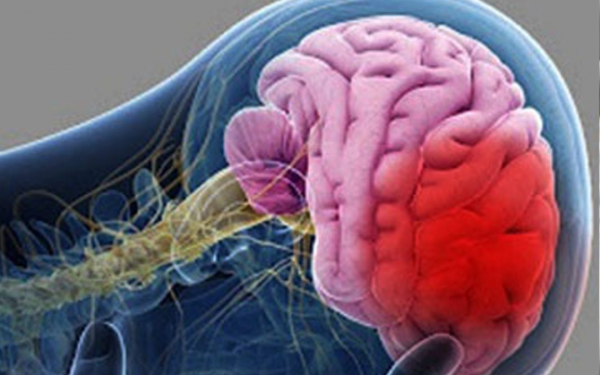A stroke is one of the most dangerous neurological conditions, capable of causing life-altering damage or even death. Often striking without warning, a stroke occurs when blood flow to the brain is disrupted, either by a blockage or a rupture in blood vessels. This interruption deprives brain cells of oxygen and nutrients, leading to severe consequences.
While strokes have long been associated with older adults, the alarming rise in cases among younger people highlights the role of modern lifestyle choices. Let’s explore the causes, early symptoms, and surprising morning habits that might silently increase your stroke risk, along with actionable steps to protect your health.
What Exactly Is a Stroke?

A stroke is a medical emergency that occurs when the brain’s blood supply is cut off. Without blood, brain cells begin to die within minutes. There are two main types of strokes.
1. Ischemic Stroke
This is the most common type, making up about 80% of all stroke cases. It happens when a blood clot or fatty deposit blocks blood vessels in the brain. Factors contributing to ischemic strokes include:
- High cholesterol: Cholesterol buildup can block arteries, leading to a stroke.
- Diabetes: High blood sugar levels damage blood vessels and increase stroke risk.
- Obesity: Excess weight adds strain to the cardiovascular system.
- Smoking: Chemicals in cigarettes damage blood vessels and promote clot formation.
2. Hemorrhagic Stroke
This type occurs when a blood vessel in the brain bursts, causing bleeding that damages surrounding brain tissue. Common causes include:
- High blood pressure (hypertension): A leading cause of blood vessel rupture.
- Blood-thinning medications: These can increase the risk of brain bleeds.
- Traumatic head injuries: Damage to the brain can trigger hemorrhages.
- Weakened arteries: Conditions like atherosclerosis make arteries prone to rupture.
Understanding these types of strokes and their causes is critical for prevention and timely treatment.
Recognizing Early Symptoms of a Stroke
Strokes often occur suddenly, but recognizing the warning signs can save lives. Key symptoms include:
Neurological Symptoms
- Sudden loss of balance or dizziness.
- Intense, unexplained headaches, often with nausea.
- Difficulty seeing in one or both eyes, such as blurred vision or partial loss of sight.
Physical Symptoms
- Weakness or numbness on one side of the body, particularly in the face, arm, or leg.
- Facial drooping or a lopsided smile.
- Slurred speech or difficulty speaking, indicating potential paralysis in facial muscles.
If you or someone you know exhibits these symptoms, seek emergency medical care immediately. Acting quickly can dramatically improve the chances of recovery.
Hidden Morning Habits That Can Increase Stroke Risk
Certain everyday habits, especially in the morning, can quietly elevate your stroke risk over time. Many of these behaviors seem harmless but have serious long-term effects. Let’s examine these habits more closely.
1. Jumping Out of Bed Too Quickly
Getting out of bed abruptly can be surprisingly dangerous. While you sleep, your heart rate and blood pressure naturally decrease. Jumping up too quickly causes a sudden spike in blood pressure, which can strain blood vessels and increase the risk of a stroke.
What to Do Instead: Take one to two minutes to stretch and sit on the edge of your bed before standing up. This helps your body adjust gradually to being awake.
2. Drinking Salt Water in the Morning
Some people drink salt water in the morning, believing it aids in detoxification. However, high salt intake significantly raises blood pressure, particularly for those with hypertension. Elevated blood pressure is a key risk factor for both ischemic and hemorrhagic strokes.
Better Habit: Start your day with plain water. It’s hydrating, supports digestion, and is gentle on your cardiovascular system.
3. Exercising Too Early
Morning workouts can be great, but exercising too soon after waking up—especially in cold weather—can increase your stroke risk. Cold temperatures constrict blood vessels, and sudden physical exertion during this time can strain your cardiovascular system.
What to Do Instead: Wait until the day warms up, and always include a gentle warm-up before diving into intense exercise.
4. Overhydrating First Thing in the Morning
While drinking water in the morning is important, gulping down excessive amounts all at once can strain your cardiovascular system. This is particularly risky for individuals with pre-existing heart conditions.
Better Approach: Sip 200–300 ml of water slowly rather than drinking large amounts at once. This gives your body time to adjust.
Preventing Stroke Through Lifestyle Changes
Beyond avoiding risky morning habits, adopting a healthier lifestyle can significantly reduce your stroke risk. Here are some key changes to consider.
- Eat a balanced diet: Focus on fruits, vegetables, whole grains, and lean proteins while reducing processed foods and unhealthy fats.
- Exercise regularly: Aim for at least 30 minutes of moderate activity five times per week.
- Quit smoking: Smoking is one of the most preventable stroke risk factors.
- Control chronic conditions: Properly manage diabetes, hypertension, and high cholesterol with medication and healthy lifestyle choices.
- Reduce stress: Incorporate mindfulness practices like yoga or meditation to protect your heart and brain.
Conclusion: Small Changes Can Save Lives
A stroke can strike without warning, but understanding its causes and making small, intentional lifestyle changes can significantly reduce your risk. By avoiding harmful morning habits—like jumping out of bed too quickly or consuming too much salt—and adopting healthier routines, you can protect your brain and improve your overall health.
Take the time to educate yourself and your loved ones about stroke prevention. Share this article to spread awareness and inspire others to make positive changes. Remember, every small step you take today could help prevent a life-altering event tomorrow.


